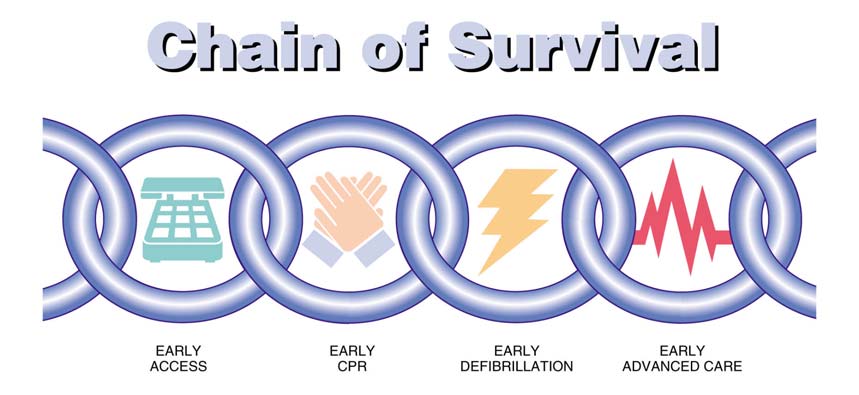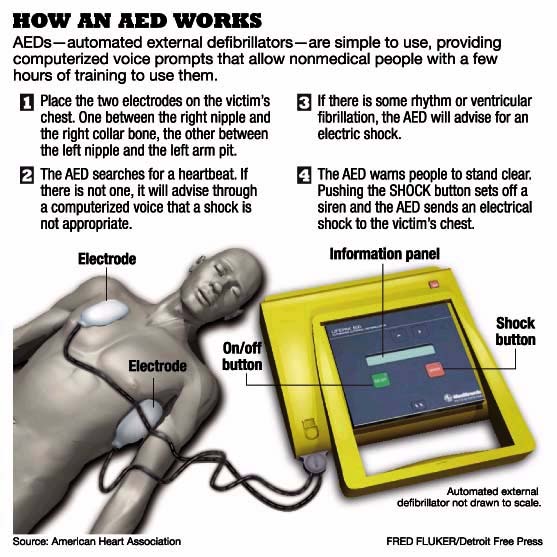Cardiopulmonary Resuscitation
Lesson 8: Administer CPR and Automated External Defibrillation (AED) on an
Unconscious Casualty with Suspected Cardiac Arrest.
8-1
8-1. INDICATIONS FOR EARLY DEFIBRILLATION
Very few patients who experience sudden cardiac arrest outside of a hospital survive unless a rapid sequence of events takes place. The chain of survival (figure
8-1) is a way of describing the ideal sequence of events that can take place when such an arrest occurs.
Figure 8-1. Cardiopulmonary resuscitation chain of survival.
a. Recognition of early warning signs and immediate activation of emergency medical support. Few patients benefit from defibrillation when more than 10 minutes elapse before administration of the first shock and/or CPR is not performed in the first
2 to 3 minutes.
b. Immediate bystander CPR. Cardiopulmonary resuscitation helps prolong the time during which defibrillation can be effective.
c. Early defibrillation. This may be the most important link in the chain of survival. Rapid defibrillation has successfully resuscitated many patients with cardiac arrest from ventricular fibrillation. Figure 8-2 shows how an automated external defibrillator (AED) works.
d. Early advanced cardiac life support.
Figure 8-2. How the AED works.



